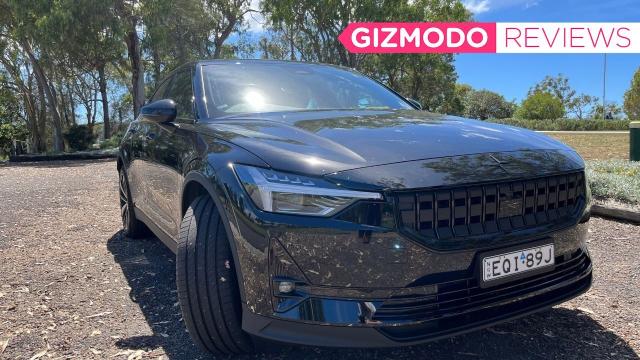Hailed by many as the Tesla killer, The Polestar 2 is the first production vehicle of its name to enter the Australian market. While it doesn’t meet the range or battery size of the Tesla Model 3, it’s a valiant effort, combining comfort and high-tech features with the smooth driving experience provided by an electric vehicle.
It’s safe to say that I’m a fan; I’ve always been one to go for the underdog, although in the electric vehicle market, the “underdog” appears to be automotive giant Volvo (the owners of Polestar) and the much smaller, yet popular Tesla.
But how right has Volvo gotten it with the Polestar 2? Well, I took one for a spin over a week, clocking about 1,000 kilometres in travel, including a return trip from Sydney’s Inner West up to a town just south of Port Macquarie. As an inner-city renter who does want to get an EV at some point, here’s my review of the Polestar 2.
The Polestar 2 is a powerful everything car
It’s hard to say a bad thing about the Polestar 2. It’s also difficult to pick what kind of car it is from any angle. From the front, it looks like a modern muscle car. From the side, it looks like a sedan. From the back, it looks like an SUV.
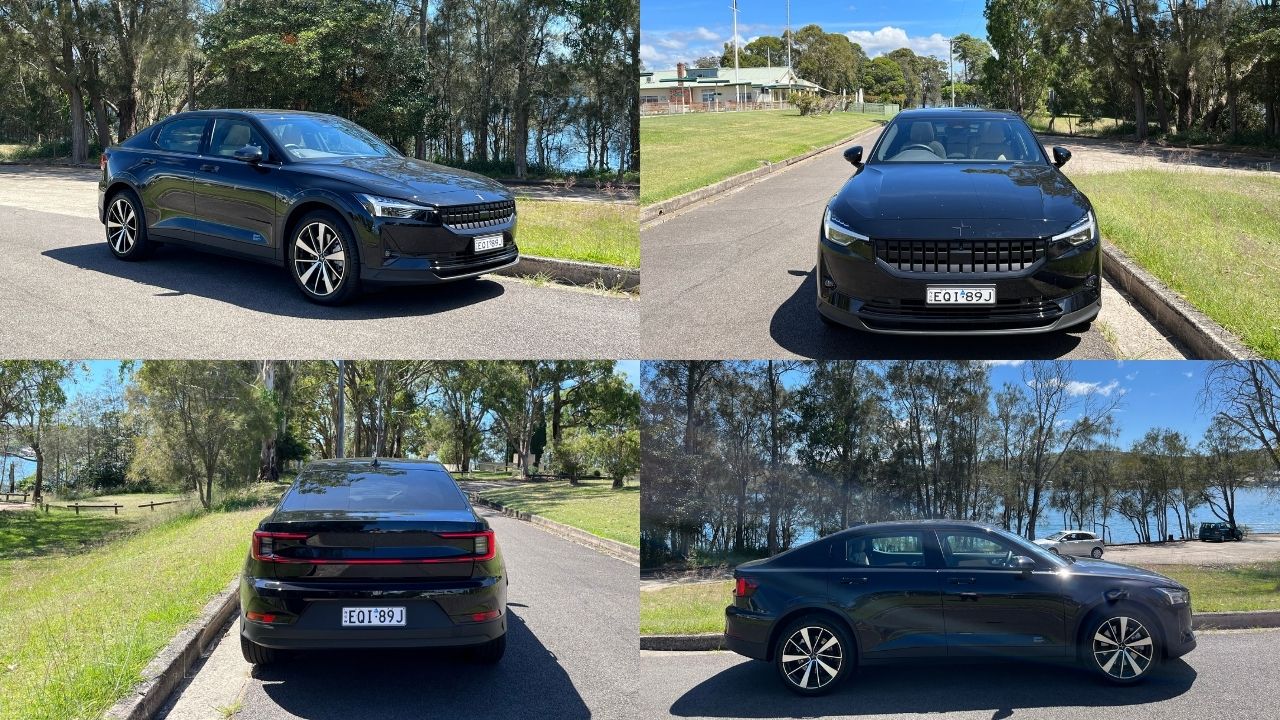
Incredibly, it’s all of these things, making it a great car to enter a market with. Families will love it for how spacious it is while enthusiasts will love it for its slick bodywork (and speed, ooft).
The inside of the car is also absolutely beautiful, spacious with a panoramic roof available for purchase. It drives well on the road, with fast acceleration and a wide range of expensive internal tech.
Specs? The Polestar 2 has them
Let’s do a quick rundown of all the tech and specs of the Polestar 2. It’s a very tech-heavy vehicle, with tonnes of features and extras.
- Starts at $59,000, going up depending on the model and add-on packs
- Range starts at 440 – 474km (69 kWh) up to 510 – 542km (78KWh)
- 0 to 100km/h 7.4 seconds (4.7 in the dual-motor model)
- Front-Wheel Drive (AWD in the dual-motor model)
- Capable of Type 2 CCS charging, AC and DC. You can find charging info here
- Android Auto infotainment system with Google Assistant
- Heated and adjustable front seats
- Auto-dimming rear-view mirror and folding exterior mirrors
- Dual-zone climate control
- Keyless entry/start with a fob
- 19-inch alloy wheels
- Reversing camera with adjustment lines
- Lane-keep assistance, traffic recognition, driver attention monitoring
- Eight airbags
- USB charging ports throughout the car
- automatic boot
- Cruise control
- App integration
There are also three extras packs.
- $8,000 performance pack: Brembo brakes, 20-inch alloy wheels, Adjustable Öhlins dampers and special edition seatbelts
- $6,000 plus pack: 13-speaker Harmon Kardon sound system, vegan upholstery, heated rear seats, heated steering wheel, panoramic roof, wireless phone charging, tinted rear window, heat pump and ambient lighting around the cabin
- $5,000 pilot pack: Adaptive cruise control, pilot assist, 360 camera technology, side parking sensors, blind-spot assistance, Pixel LED headlights, LED front fog-lights, auto-dimming exterior mirrors
The model I drove features the performance pack and the pilot pack, making the full price about $78,000.
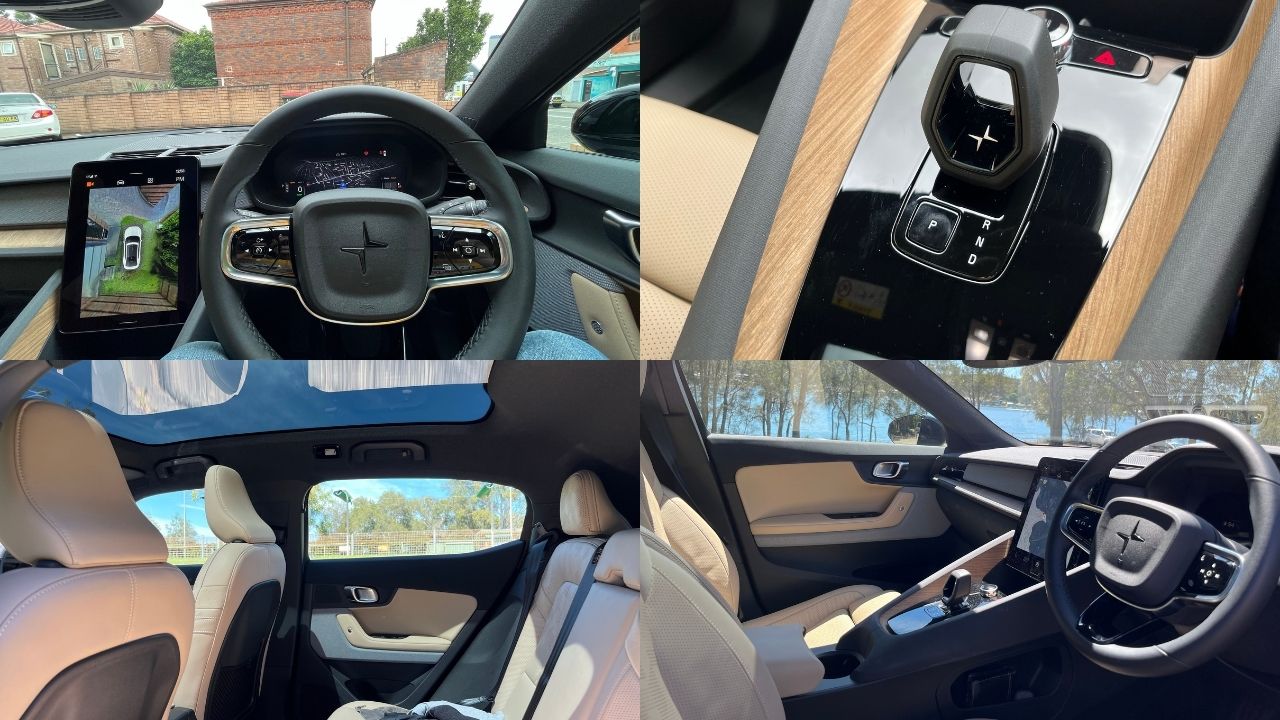
Autopilot? Not yet, but close
I’d be doing the Polestar 2 an injustice by not talking about its pilot features. I was very impressed with the adaptive cruise control, which changes speed depending on the vehicle in front of you. Equally, I was also very impressed with the pilot assist feature, a toned-down auto-driving feature which still requires you to have hands on the wheel, but when it can see white lines beside itself, it can drive seemingly all on its own (just never let it. It’s not perfect, it’s just meant to help you).
The automatic braking was also really cool, with the car able to stop itself from moving without my foot touching the brake pedal. You can disable this, as much as you can adjust the firmness of the steering wheel, but it’s too good to let go, in my experience.
Also, it’s really cool that you can see Google Maps from within the dash. What’s more is that you can set a course for EV chargers on the road and immediately know if they’re compatible with the car or not. The Google Maps integration really is amazing.
The battery situation
Range was long for an electric vehicle (about 500 kilometres on a full charge), with recharge times taking 27 hours with the at-home cable from 27 per cent. From 78 per cent, you can get to 100 per cent within 45 minutes with a 50kW fast charger (these are common up the east coast at rest stops).
I’ve gotta say that I was feeling the range anxiety, so I stress that you charge at every viable opportunity (fast chargers on the road and portable chargers whenever you’re somewhere for more than 12 hours).
Punching in a trip from Newcastle to the Inner West on 57 per cent, I would have reached home with 6 per cent battery left. Not ideal, but planning ahead is an essential part of having an EV. If you’re bad at planning, I’d say wait for bigger, faster-charging batteries.

Polestar 2 versus Tesla Model 3
Let’s put these cars side-by-side, as it’s obvious that the Polestar 2 wants to directly compete with the Tesla Model 3. The Polestar 2 Long Range single-motor was the car I tried out, giving it a weeks’ worth of driving – it’s capable of about 540 kilometres off a full charge, whereas the equivalent Tesla Model 3 long-range model is capable of about 580 kilometres.
Just keep in mind that the maximum ranges of these cars blurs when taken over long distances – for example, when driving up and down the east coast of Australia, I kept seeing the battery expectation on arrival creep up.
Arriving in Kendall (just south of Port Macquarie) from Newcastle, the range went from 89 per cent to 35 per cent, with an expected arrival battery of 21 per cent – a good 14 per cent short of the reality.
The Polestar 2 does have a smaller battery than the Tesla Model 3, weighing in at about 78kW to the Model 3s 82kW (comparing long-range models). The Model 3 would be able to make long (and short) distances with greater battery capacity remaining, however it’s not that much of a dramatic difference. Polestar says its smallest battery can reach 540 kilometres on a single drive, which isn’t unbelievable but is almost unachievable for somebody as range anxious as myself.
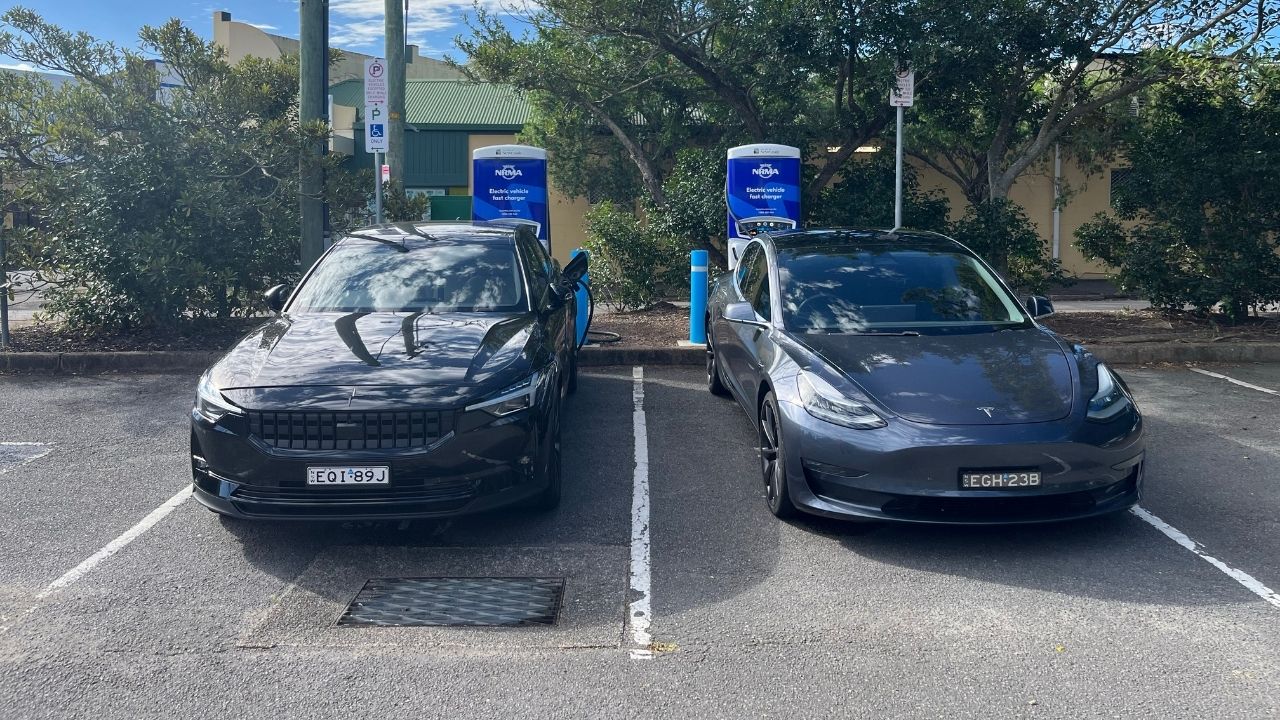
It should also be said that the Polestar 2 single-motor long-range is front-wheel drive, whereas the long-range Model 3 is all-wheel drive. A key difference for some and possibly one that makes or breaks a purchase. Both brands offer higher and lower-spec models with different range expectations.
The two also look distinctively unique, with the Tesla Model 3 bent on looking different in every way possible while the Polestar 2 looks somewhat like its petrol-fuelled cousin, the Volvo XC60, but with a more futuristic, electric approach. This includes a grill that makes it look powerful, almost like a Dodge muscle car. Personally, I prefer this look over the Tesla, along with the extra internal and boot space. The car looks absolutely space-age too, but perhaps not as much as the Kia EV6 or the Hyundai Ioniq 5.
Let’s just touch on a price comparison. The Polestar 2 Long Range Single Motor starts at $65,000 ($59,000 for the standard range model), whereas the Model 3 starts at $73,400 for the long-range model ($59,900 for the standard range model).
The Polestar 2 scrapes in just below the Model 3 in terms of price, however, I’d stress that you’d be missing out by not purchasing at least one of the accessory packs, especially the pilot pack. Notably, the panoramic roof that comes standard in the Model 3 is included in the plus pack. Packs can bump the price up above the Tesla Model 3.
It’s important to note that these cars both skim below the luxury car tax, which sits at $79,659 for fuel-efficient cars as of the 2021-22 financial year. You won’t have to pay extra for these vehicles unless it exceeds this threshold.
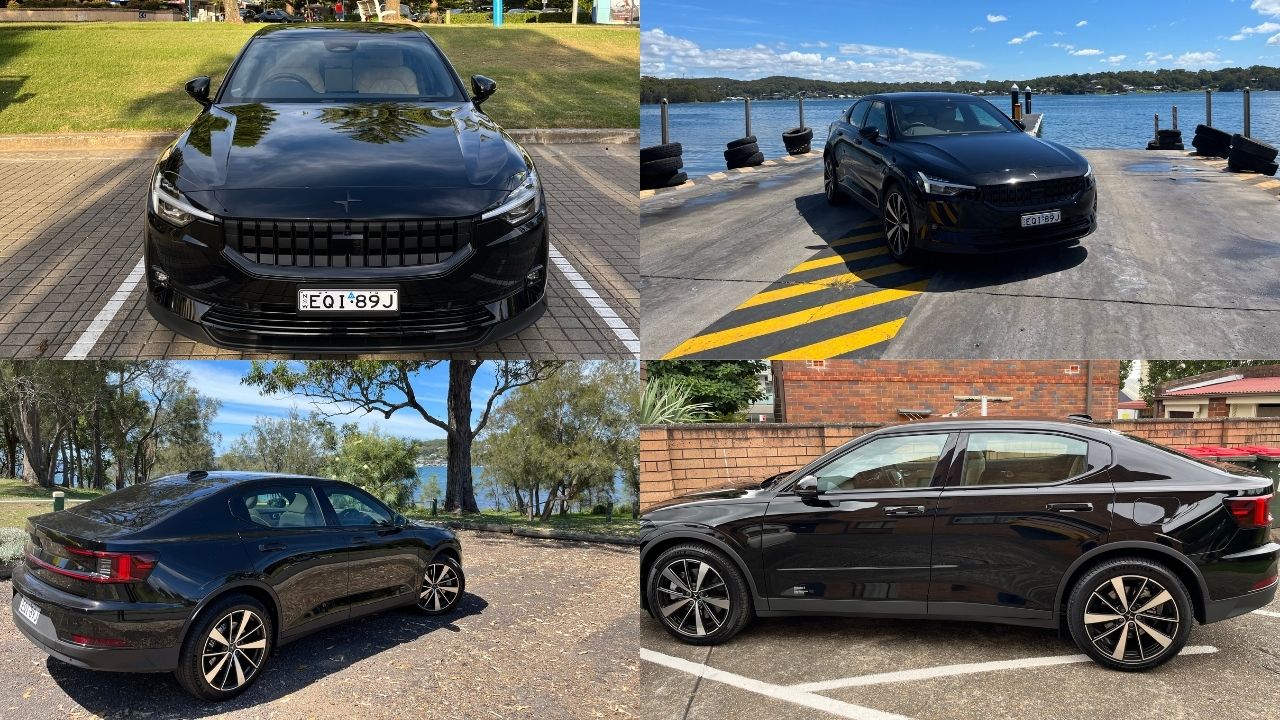
The Polestar 2 is one fine vehicle
I can’t fault the Polestar 2 on much. It would be nice to have longer-range and faster charging, but these are things that will come in time as the technology improves. It would also be nice to have a compartment for a spare wheel, but this isn’t terribly necessary (the car comes with a puncture repair kit).
While it clocks in at a similar price to the Tesla Model 3, The Polestar 2 is no Tesla killer. Rather, it’s one of the first vehicles from a large automotive company to see Tesla and have a go at it. This is one of the first Tesla alternatives.
Up until this car, EVs have bounced around the Model 3 mark, with very few direct competitors to the “budget” Tesla. This is one to consider, no doubt in my mind.
The Polestar 2 will release later this month.
Image: Zachariah Kelly/Gizmodo Australia
Want more Aussie car news? Here’s every EV we’ve reviewed in the last two years, all the EVs we can expect down under soon, and our guide to finding EV chargers across the country. Check out our dedicated Cars tab for more.
